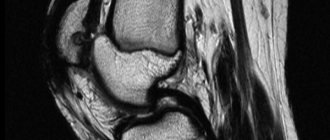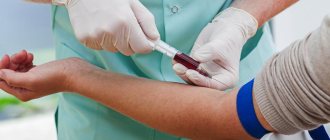Manifestations of various emotions, changes in a person’s mood, manifestations of both sadness and joy are normal and depend on many factors - from temperament and character to ongoing events influencing from the outside. However, when these changes are excessive, often occur unexpectedly and for no apparent reason, emotions get out of control, or a person remains in a fundamentally positive or negative mood for a long time, it is likely that bipolar disorder can be diagnosed. This disease was first described at the end of the 19th century by the famous German psychiatrist Emil Kripelin, calling it manic-depressive psychosis. Many world famous personalities such as Vincent van Gogh, Isaac Newton, Ludwig van Beethoven, Abraham Lincoln suffered from this disease. A severe form of this disease, which in the international classification of diseases is called bipolar affective disorder (BAD), is detected in 3% of the world's population.
Bipolar Personality Disorder - General Information
According to statistics, people aged 14 to 44 experience bipolar disorder. Unlike adults, children and adolescents experience more frequent mood swings from mania to depression, sometimes several times a day. 90% of young people make their debut precisely from the phase of depression or melancholy. Another feature of bipolar disorder is that due to the low level of diagnosis, the patient can live with this disease for 5-10 years without knowing the cause of the painful symptoms.
Most often, bipolar disorder is diagnosed in people whose immediate family members have had a similar problem. The causes of this disease are unknown, but the manifestation of its symptoms can be caused by stress, overexertion, and various diseases. However, by isolating a person from the influence of these factors, it is impossible to get rid of the problem; you need to seek help from a psychotherapist.
Bipolar disorder is a disease that is completely impossible to get rid of. But with properly selected drug treatment and psychotherapy, the quality of life significantly improves and the periods between phases lengthen. The person remains socialized and able to work.
Alternative Treatments
Most patients with this disease require drug treatment. But psychotherapy also plays an important role in the treatment process because it helps you cope with problems at work and at home caused by your illness.
[]
Other treatments
Types of psychotherapy used to treat bipolar disorder include:
- Cognitive behavioral therapy, which focuses on changing certain patterns of behavior and thinking to help you feel better. It is based on the theory that thoughts and behaviors can affect a patient's symptoms and become a barrier to recovery.
- Interpersonal therapy that focuses on the patient's personal and social relationships and problems related to them. During sessions, the patient discusses his problems, the reasons for their occurrence and ways to resolve them.
- Problem-solving therapy, a simplified version of cognitive therapy that has been used in the past to treat depression. She focuses on the problem and helps the patient find an immediate solution.
- Family therapy, therapy that helps relatives and family members cope with a stressful situation or important life event. During the sessions, family members can express their concerns about how the disease will affect the patient and the entire family.
In some cases, electroshock therapy is used. During this procedure, a controlled electrical charge is passed through electrodes that are attached to the patient's skull. This charge should cause a minor spasm in the brain, which can balance the brain chemicals.
Complementary therapy
Omega-3 fatty acids found in fish oil can be used as an additional drug to the main course of treatment for bipolar disorder. However, this dietary supplement requires additional research regarding the effectiveness of its use in the treatment of children and adolescents.
Food for thought
Establish a long-lasting and trusting relationship with your therapist. It will help you see changes in behavior and personality characteristics that may indicate that you are experiencing a manic or depressive episode. Treating an attack early will help you get over it faster.
Bipolar disorder not only affects the patient, but affects everyone in the family. They must understand what kind of disease this is and know how to help a loved one.
Symptoms and signs
From the name it is clear that we are talking about two different poles of affective manifestations, that is, manifestations of mood. One of these conditions is depression. Depression in bipolar disorder is severe, with vivid symptoms. It can last up to a year and is manifested not only by low mood, lack of ability to enjoy and interest in current events, but also by psychosis, when ideas of self-blame arise, the patient feels inferior, unnecessary, and poisoning the lives of those around him. Also inherent are nihilistic thoughts about suffering from some serious illness, despite medical evidence to the contrary. Delusional thoughts, as well as suicidal thoughts and even attempts, may also occur.
The other pole of bipolar disorder is a hypomanic state or hypomania, the characteristic signs of which are an increased euphoric emotional background, the patient is constantly on the move, hyperactive, and has very fast, associative speech. The patient is constantly cheerful, often hypersexual, almost always awake or sleeping 2-3 hours a day.
Hypomania is often followed by a manic bipolar state with psychotic manifestations. The patient develops beliefs in his own greatness, he believes that he is capable of anything, he feels that he has a special calling in this world or that he is a descendant of great people. In advanced manic episodes of mania with psychotic manifestations, anger, irritability, and direct aggression often occur. This condition leads the patient into extremely unpleasant and sometimes dangerous situations.
In addition to the typical symptoms of the disease, there are also a large number of comorbid mental disorders. Comorbid are mental disorders that accompany the underlying disease. The most common disorder of this kind is anxiety, which is manifested, among other things, by nonspecific autonomic symptoms, including sweating, rapid heartbeat, tremors of the limbs, various disorders of the gastrointestinal tract, dizziness, headaches, suffocation and many others. When these signs appear suddenly, mainly in public places, they are usually called panic attacks.
Types of Bipolar Disorder
Bipolar disorder can be of Ι and ΙΙ types.
Bipolar disorder type I is a condition in which the patient experiences constant mania, that is, overexcitement, enthusiastic inappropriate behavior, manic psychosis, as well as severe depression. Symptoms of this type are more severe, so hospitalization is indicated in most cases.
Bipolar II disorder is characterized by short periods of hypomania followed by periods of deep depression. Hypomania is a premanic state with less active manifestations. Hypomania lasts a very short period of time - from several days to several hours, so sometimes patients do not even notice them and do not inform the doctor about it. Only careful, painstaking work with the patient allows us to identify hypomania, make the correct diagnosis and prescribe treatment.
Sboeva Elena Mikhailovna
Psychotherapist of the highest category
More about the doctor
Make an appointment
Manic phase
When treating patients, specialists are faced with the main symptoms. They exhibit: hyperthymia - painful elevation of mood, motor mental agitation (tachypsia).
These manifestations go through 5 stages:
Hypomania with elevated mood, bursts of energy, acceleration of thought and speech. At the same time, all the activities of persons suffering from the disorder are unproductive. They sleep little and eat a lot.- Pronounced clinic. Patients express delusions of grandeur, talk continuously, but it is impossible to maintain a conversation with them. They are constantly obsessed with new ideas and never follow through with anything.
- Furies. The pain reaches its climax. Movements and speech become incoherent and unproductive. Patients need help
- Calm down. The symptoms gradually subside.
- Reactivity. All mental processes are restored. Clients have an asthenic condition. They may not remember what happened to them.
Phases of bipolar disorder
There are several phases of bipolar personality disorder:
- Depressive (unipolar depression). People experience depressed mood, despair and despondency, complain of lack of energy and mental focus, and may eat and sleep too much or too little.
At the peak of bipolar depressive disorder, depersonalization and derealization may occur. The boundaries of one’s own “I” and the surrounding world become blurred, patients experience difficulties in perceiving what is happening. Familiar places seem new, the color scheme of the surrounding world changes, and the patient constantly experiences a feeling of “déjà vu.” Sounds become muffled, even if someone is speaking very close, it seems to the patient that the voice is coming from afar.
- Manic (hypomanic). In this state, patients are full of energy, overly happy or optimistic, experience euphoria and have extremely high self-esteem. At first glance, these are positive signs, but when a person experiences large-scale manic episodes, these symptoms and this emotional state can go to dangerous extremes. A patient in this phase may spend huge sums of money indiscriminately or behave carelessly without realizing the full danger. When speaking, people may choke on words, speak at a high speed, or jump from one thought to another. These episodes may also be accompanied by delusions of grandeur or making serious decisions without thinking about further consequences.
In the development of the manic phase, the following stages of development can be distinguished:
- Hypomania – increased arousal, emotional upsurge.
- Mania - all signs are more pronounced, aggression, irritability, short temper and rage are possible.
- Peak phase. The patient constantly experiences nervous excitement, he cannot relax. All his emotions are “heated up” to the limit, coordination of movements is impaired, thoughts are illogical and abrupt, and his speech constantly jumps from one sentence to another.
- Relief of symptoms. The patient gradually calms down. Movement disorders are on the decline. The speed of thinking and increased emotional mood remain unchanged.
- Return to normal.
- Mixed. Sometimes people have complaints that are characteristic of both depression and mania at the same time. They may also experience frequent phase changes - 4 or more episodes in one year.
In the intervals between the depressive and manic phases of bipolar disorder, there is a bright period, during which the general background of mood becomes relatively stable, the person continues to respond adequately to certain events, and the emotional sphere is under his control. This is the main criterion for remission of bipolar disease.
Classification of organic mood disorder and symptoms
There are two degrees of severity of this pathology:
- psychotic – characterized by inappropriate reactions, lack of control of behavior, and uncriticality of the patient’s own condition;
- non-psychotic - although emotions are at their peak, the patient, understanding what is happening to him, can partially regulate behavior and comply with accepted norms in society.
As for the manifestations, they are as follows:
- manic - accompanied by a feeling of immense happiness, universal joy. The patient is hyperactive, fussy, in high spirits, behaves very relaxed, can literally move mountains;
- depressive - the individual is overcome with melancholy, he cannot do anything, he is depressed, sad, the mental sphere is depressed;
- bipolar - mania and depression cyclically replace one another;
- mixed or combined - the above states alternate chaotically.
The clinical picture of organic affective disorder depends on its form.
Depressed patients have a low mood, are apathetic, passive, sad, and show no interest in anything. It is difficult for him to perform physical and mental work; his head, as they say, does not cook, he is even dizzy. The muscles are sluggish and fatigue sets in quickly. The patient cannot concentrate and collect thoughts “in a heap”, thinks about the uselessness of his existence, is disappointed in life, blames himself for something. No appetite, can't sleep.
Manic disorder , on the contrary, is characterized by high mood, activity of thought and movement. The individual acts chaotically, quickly, but aimlessly. He thinks quickly, the process of cognition is accelerated, but shallow, since he cannot fully analyze anything. The behavior is impulsive, difficulties that arise encourage aggression. With the psychotic severity of the disorder, delusional states may occur.
If measures are not taken in time, then organic affective mood disorder is fraught with big problems. Depressed patients withdraw into themselves, do not want to contact anyone, and lie in bed all day long. Their condition may deteriorate so much that it may end in suicide. In manic patients, an outburst of aggression can lead to an antisocial act or crime. Unable to resist the excitement, they start fights, damage other people's property, etc.
Bipolar disorder in women
According to statistics, bipolar disorder type I occurs with equal frequency in men and women, and type II disease is more often diagnosed in women. It is also known that the female course of the disease is characterized by rapid cycles and mixed episodes. Comorbid pathologies often include eating disorders, borderline personality disorder, alcohol or drug addiction, and abuse of psychotropic drugs. Women are more susceptible to somatic diseases such as migraines (intense headaches), thyroid pathologies, diabetes, and obesity.
For women, a special technique is being developed to alleviate this disorder, since from adolescence to menopause there are specific hormonal changes that must be taken into account. In addition, psychotropic substances that should stabilize the condition may adversely affect the intrauterine development of the fetus if the woman is pregnant. They note that in the first trimester of pregnancy this disorder occurs in a milder form, but after childbirth they often have to deal with postpartum depression. Thus, at each stage of development of the female body, a competent doctor must review and adjust the treatment regimen. Often, in the treatment of women, a complex method is used, combining drug therapy and cognitive-behavioral or interpersonal therapy with a psychotherapist. This approach gives the fastest results.
Depressive phase
In contrast to mania, hypothymia develops with depression, lethargy and a slowdown in the pace of thinking (bradypsychia).
4 stages:
- Initial. Those who are sick have a decrease in mood and ability to perform any activity.
- Growth. Depression is filled with fears, insomnia, loss of appetite up to its complete absence.
- Pronounced clinical manifestations. Phobias reach a maximum, Patients are withdrawn. Upon contact, they express delirium, self-blame, and hypochondriacal complaints. They are at increased risk of suicide. During the examination, they voice frightening illusory pictures and hallucinations.
- Reactive. Symptoms are gradually reduced.
Doctors at our center note that patients in the hospital receive relief in the evening hours.
Treatment of bipolar personality disorder
Attempts to get rid of bipolar disorder on your own do not bring the desired result and ultimately lead to a worsening of the situation, including the development of drug or alcohol addiction. Keeping a mood diary can help in diagnosing the disease, where the patient records all his thoughts, emotions, feelings, and changes in mood. Such records will help the doctor assess the mental state in detail and make the correct diagnosis. If you suspect bipolar disorder, you should consult a doctor, and the sooner a person realizes that he has a disease and comes to the clinic for help, the sooner he will receive professional help and the painful symptoms will be replaced by a stable condition. It is impossible to get rid of the disease on your own, since a person cannot fully adequately evaluate not only his actions, but also the alternation of phases of the disease.
Bipolar disorder is one of the few mental disorders for which drug treatment is indicated in 100% of cases, and psychotherapy is an auxiliary tool. This disease is incurable, but its diagnosis and treatment are extremely important. Treatment can reduce the number of episodes, their severity and intensity, as well as prevent negative life events, help prevent relationship breakdowns, job loss and even suicide attempts. Thus, the quality of life of a patient with bipolar disorder who is undergoing treatment will be many times higher than that of a person who neglects treatment. If a patient loses touch with reality and harms himself and others, he is subject to hospitalization; outpatient treatment in this case is not acceptable.
If you have the disease, it is recommended to exclude coffee, strong tea, alcoholic and energy drinks from your diet in order not to provoke an overexcited state. If possible, you should stop smoking and under no circumstances take even soft drugs. It is also very important to establish a sleep schedule, sleep at least 8 hours a day and try to go to bed at approximately the same time. You should learn to recognize mood swings and notice the early signs of new episodes.
If you suspect you have bipolar personality disorder, there is no need to panic, only a doctor can diagnose the disease, so you need to make an appointment with a psychotherapist with extensive experience in managing such patients at our MedAstrum clinic. If the diagnosis is confirmed, the doctor will prescribe the necessary medication, prescribe psychotherapeutic sessions if necessary, and give recommendations for further lifestyle adjustments. You can make an appointment yourself on the website or by contacting our administrators.








